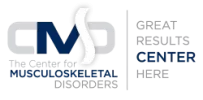Discography (Discogram)
When a patient suffers from back pain, it is often recommended to begin with conservative treatments (e.g., medication, physical therapy and/or modified activity) to relieve the pain. If the pain doesn’t subside after those treatment options, a discography is an effective procedure to identify the pain source.
Discography, an injection to evaluate back pain, has been used as a diagnostic tool since the 1950s to accurately reveal the source of back pain. It is commonly administered to plan lumbar fusion surgery, with the aim of confirming that one or more discs may be the root cause of back pain.
A discography (also known as discogram) consists of a contrast liquid which is injected, using X-ray guidance, into the center of the disc or discs that are the suspected source of pain. An X-ray or CT scan may also be used to take pictures of the injected disc(s).
If the disc is the source of pain, disc pain is typically due to herniation. This condition occurs when the disc’s outer layer begins to deteriorate and weaken. When that happens, it enables the inner layer of the disc to push outward (or herniate), which results in irritating the spinal nerves. Consequently, this creates chronic and severe pain.
Benefits of Discography
- Ability to simultaneously view bone, blood vessels and soft tissue
- CT scanning (painless, non-invasive and more detailed than conventional X-rays)
- Pinpoints the presence or absence of specific disc(s) involved in causing back pain symptoms
- Usually no side effects with the typical diagnostic X-ray in this exam
Indications for Discography
- A patient who experiences persistent spine pain
- A suspected disc abnormality
- Non-invasive tests have failed to provide an explanation or source of pain
- A pain correlation is desired
- Patient is willing to undergo treatment directed at the disc
Spinal Care At The CMD
At The Center for Musculoskeletal Disorders, we provide discography after other conservative treatments have been exhausted.
Our pain management doctors and spine surgeons work as a team to provide the best possible care to our patients.
